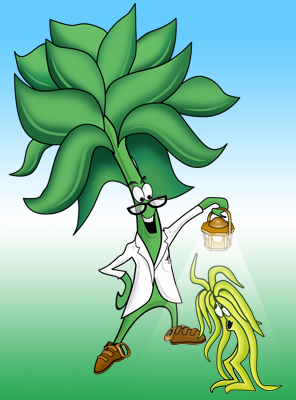Light Measurement
September 2, 2014 10:00 AM

Light Measurement
As the driving force for photosynthesis, light is fundamentally important to plant production – whether for a field crop or for a greenhouse. Plant rooting, growth, and development are all significantly influenced by both the quantity and the quality of light. Sometimes a grower can control light levels, and sometimes a grower can only control the plant or crop spacing, but either way, an awareness of light measurement can improve quality for any grower.
The transmission of light can be highly variable. In order for light to be managed properly, measurement is needed. If you trust your eyes for guidance, be aware that our eyes are very effective in adjusting to low and high conditions automatically...which is great for daily living, but terrible for making relative measurements. Another issue is that light is extremely dynamic over the course of a day. Light levels are very different (think intensity) at dawn or dusk versus 2:00pm in the afternoon on a sunny summer day.
Then there is further confusion on how to measure light, as well – with lux, lumens, foot candles, moles, or micromoles! Which light language and which tools to use? The best solution for growing plants is to measure light in a language a plant understands – a plant uses light in a specific frequency band called PAR (Photosynthetically Active Radiation). PAR meters are also referred to as Quantum meters, and PAR values are given in micromoles. [If you are a grower using ET (Evapotranspiration) values then you will be measuring light with a pyranometer instead.]
Most light meters calculate the intensity of light, in an instantaneous moment, in one specific location. The particles of light are called photons. If photons were raindrops, light meters would show the intensity of a rainstorm. Now, just as cumulative rainfall is measured with a rain gauge, the cumulative quantity of light is measured using a light sensor with a data logger. This daily total of light is called the Daily Light Integral (DLI), and is measured in units called moles. Most plants need at least 10 moles of light per day for good quality, but each type of plant has a different need for optimal growth. Seasonally, meeting that minimum or preferred DLI can mean using supplemental light, adjusting timing for using a shade cloth, cleaning a glass or poly greenhouse, and even looking at structures and plant placement. Research studies show that bench level lighting inside of a greenhouse can be reduced by 35-70% over the years by many challenges: dust, dirt, declining poly, glazing, hanging baskets, and even those lovely trees outside. There is also significant research showing preferred DLI values for most crops. Are you taking advantage of these tools?
Just a final thought on light, is this rule of thumb: a 1% increase in light levels translates into a 1% increase in plant growth...so you do the math, and see if just a 10% increase would be worthwhile for you.
All the best,

Related Links:
WatchDog Plant Growth Station
WatchDog WeatherTracker
LightScout DLI 100 Light Meter
LightScout Quantum Light Meter
Industry Articles:
Learn more about the importance of light measurement
Back